Promotion of hepatocellular carcinoma by the intestinal microbiota and TLR4
- PMID: 22516259
- PMCID: PMC3332000
- DOI: 10.1016/j.ccr.2012.02.007
Promotion of hepatocellular carcinoma by the intestinal microbiota and TLR4
Abstract
Increased translocation of intestinal bacteria is a hallmark of chronic liver disease and contributes to hepatic inflammation and fibrosis. Here we tested the hypothesis that the intestinal microbiota and Toll-like receptors (TLRs) promote hepatocellular carcinoma (HCC), a long-term consequence of chronic liver injury, inflammation, and fibrosis. Hepatocarcinogenesis in chronically injured livers depended on the intestinal microbiota and TLR4 activation in non-bone-marrow-derived resident liver cells. TLR4 and the intestinal microbiota were not required for HCC initiation but for HCC promotion, mediating increased proliferation, expression of the hepatomitogen epiregulin, and prevention of apoptosis. Gut sterilization restricted to late stages of hepatocarcinogenesis reduced HCC, suggesting that the intestinal microbiota and TLR4 represent therapeutic targets for HCC prevention in advanced liver disease.
Copyright © 2012 Elsevier Inc. All rights reserved.
Figures
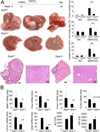
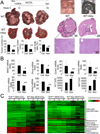


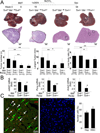
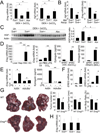
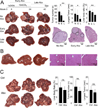
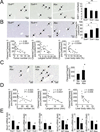
Comment in
-
Inflammation: the gut takes a toll on liver cancer.Nat Rev Cancer. 2012 May 17;12(6):379. doi: 10.1038/nrc3283. Nat Rev Cancer. 2012. PMID: 22592299 No abstract available.
-
Targeting gut flora to prevent progression of hepatocellular carcinoma.J Hepatol. 2013 Feb;58(2):385-7. doi: 10.1016/j.jhep.2012.08.019. Epub 2012 Aug 30. J Hepatol. 2013. PMID: 22940407
-
HCC Is promoted by bacterial translocation and TLR-4 signaling: a new paradigm for chemoprevention and management.Hepatology. 2012 Nov;56(5):1998-2000. doi: 10.1002/hep.26080. Hepatology. 2012. PMID: 23115011 No abstract available.
References
-
- Balkwill F, Mantovani A. Inflammation and cancer: back to Virchow? Lancet. 2001;357:539–545. - PubMed
-
- Bass NM, Mullen KD, Sanyal A, Poordad F, Neff G, Leevy CB, Sigal S, Sheikh MY, Beavers K, Frederick T, et al. Rifaximin treatment in hepatic encephalopathy. N Engl J Med. 2010;362:1071–1081. - PubMed
-
- Bettermann K, Vucur M, Haybaeck J, Koppe C, Janssen J, Heymann F, Weber A, Weiskirchen R, Liedtke C, Gassler N, et al. TAK1 suppresses a NEMO-dependent but NF-kappaB-independent pathway to liver cancer. Cancer Cell. 2010;17:481–496. - PubMed
Publication types
MeSH terms
Substances
Associated data
- Actions
Grants and funding
- R01 AA020211/AA/NIAAA NIH HHS/United States
- U54 CA163111/CA/NCI NIH HHS/United States
- F31 DK091980/DK/NIDDK NIH HHS/United States
- U54CA163111/CA/NCI NIH HHS/United States
- P40RR018603/RR/NCRR NIH HHS/United States
- 1F31 DK091980-01/DK/NIDDK NIH HHS/United States
- P40 RR018603/RR/NCRR NIH HHS/United States
- R03 DK101863/DK/NIDDK NIH HHS/United States
- R01DK076920/DK/NIDDK NIH HHS/United States
- U54 CA121852/CA/NCI NIH HHS/United States
- R01AA020211/AA/NIAAA NIH HHS/United States
- R01 LM010140/LM/NLM NIH HHS/United States
- R01 DK076920/DK/NIDDK NIH HHS/United States
LinkOut - more resources
Full Text Sources
Other Literature Sources
Medical
Molecular Biology Databases

